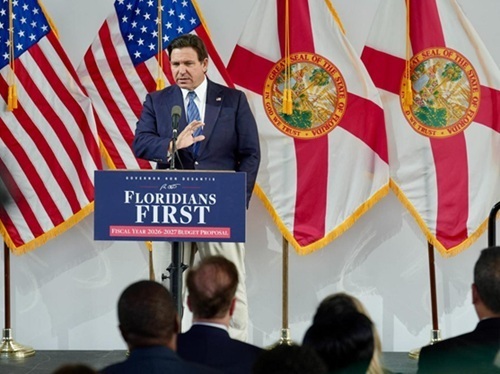The Georgia Department of Transportation and the Georgia Department of Natural Resources (GDNR) recently signed a historic Bat Conservation Funding Programmatic Agreement that will transfer conservation funding from Georgia DOT to GDNR so as to maximize bat conservation areas while minimizing impacts to transportation project timelines.
[Above photo by the Georgia DOT]
The Bat Conservation Funding Programmatic Agreement will work in conjunction with a Programmatic Consultation Agreement developed in partnership with Georgia DOT, U.S. Fish & Wildlife Service, the Federal Highway Administration, GDNR, and the U.S. Army Corps of Engineers to streamline Section 7 consultation for transportation projects under the Endangered Species Act.
The two agreements together form a first of its kind approach to protect endangered bats, creating predictability to the timeline of completing environmental documentation on transportation projects.

As part of this new agreement, GDNR will manage funds Georgia DOT has deposited into a bat conservation fund to purchase high priority lands identified through the State Wildlife Action Plan or SWAP. Currently in Georgia there are three species of bats listed on the endangered species list, with a fourth species proposed to be added, the agency said.
Those property acquisitions would target high quality habitat and promote habitat connectivity to other state and federally managed lands to maximize conservation benefit, with all money deposited to the fund staying within Georgia earmarked for the conservation of listed species with no overhead costs.
The Georgia DOT noted that those conservation payments are currently about $4,350 per acre and are expected to account for approximately $4 million per year being paid into the fund.
The agency added that this agreement allows for work to be conducted year-round with no seasonal restrictions. Prior to the agreement, the option to bypass seasonal restrictions was not available, noted Georgia DOT Commissioner Russell McMurry in a statement.
“This historic agreement with the GDNR allows Georgia DOT to aid in the conservation of critical bat habitats while also continuing our mission to deliver a safe and efficient transportation network for the state’s citizens,” explained McMurry, who also serves as treasurer of the American Association of State Highway and Transportation Officials.
“It is a demonstration of what can be accomplished when state agencies work together to deliver better outcomes while accomplishing the greater good,” he said.
“[We have] identified conservation measures that will help Georgia DOT move ahead on transportation projects without facing additional bureaucratic hurdles,” added GDNR Commissioner Walter Rabon. “If a habitat must be displaced along a highway, we will permanently protect a high-quality habitat to offset that loss.”
As part of every project, the Georgia DOT must ensure all practicable efforts have been taken to avoid and minimize impacts to protected species under Section 7 of the Endangered Species Act.
With the impending addition of the fourth bat species to the endangered species list, endangered bats would now exist in all 159 counties in the state compared to 30 counties with the initial three species. This has the potential to cause significant delays in transportation projects due to an increase in demand for consultation under Section 7.
 States
States
NCDOT Staff Participate in ‘Explosive’ Technical Training
December 19, 2025 States
States

